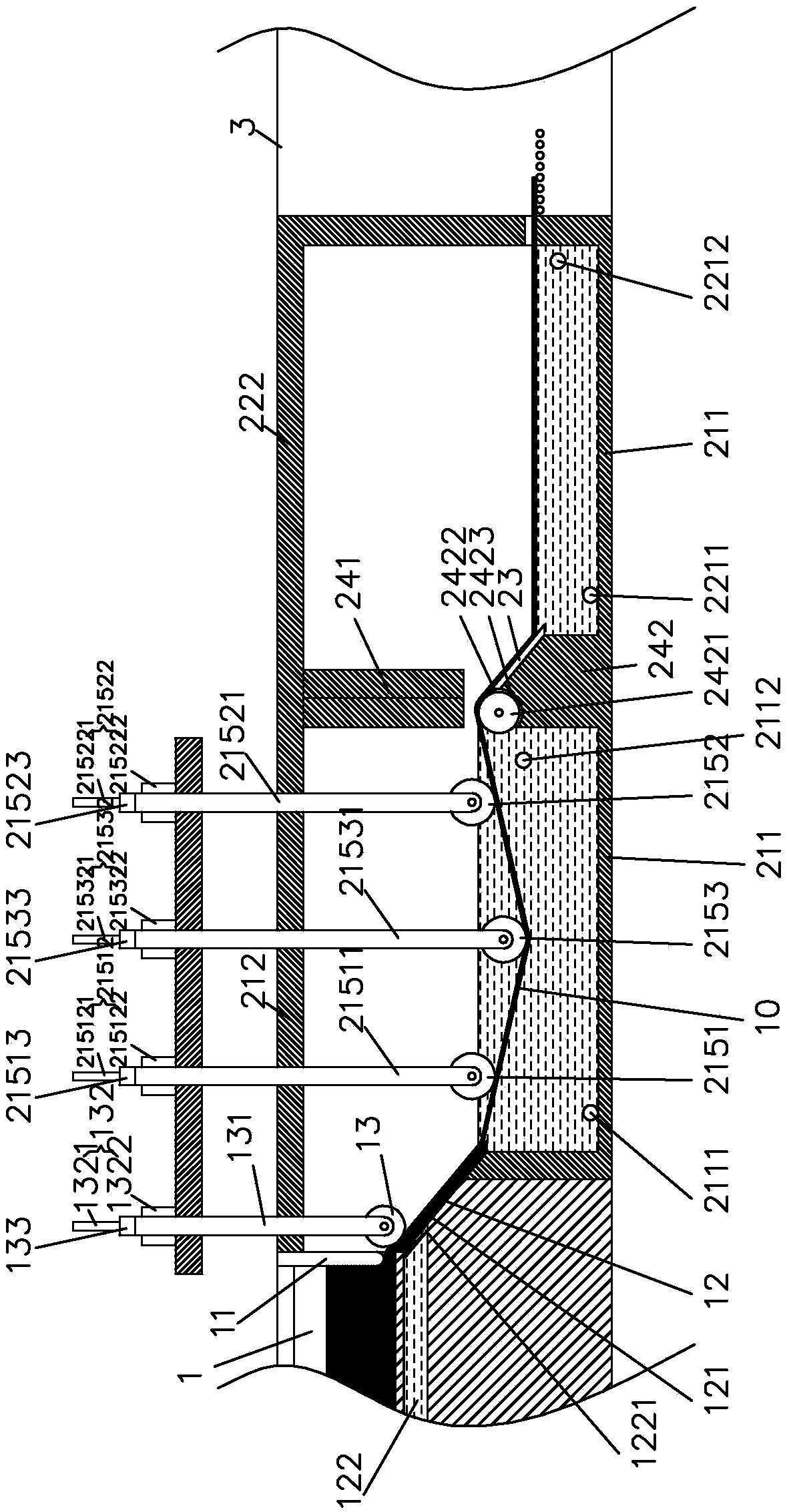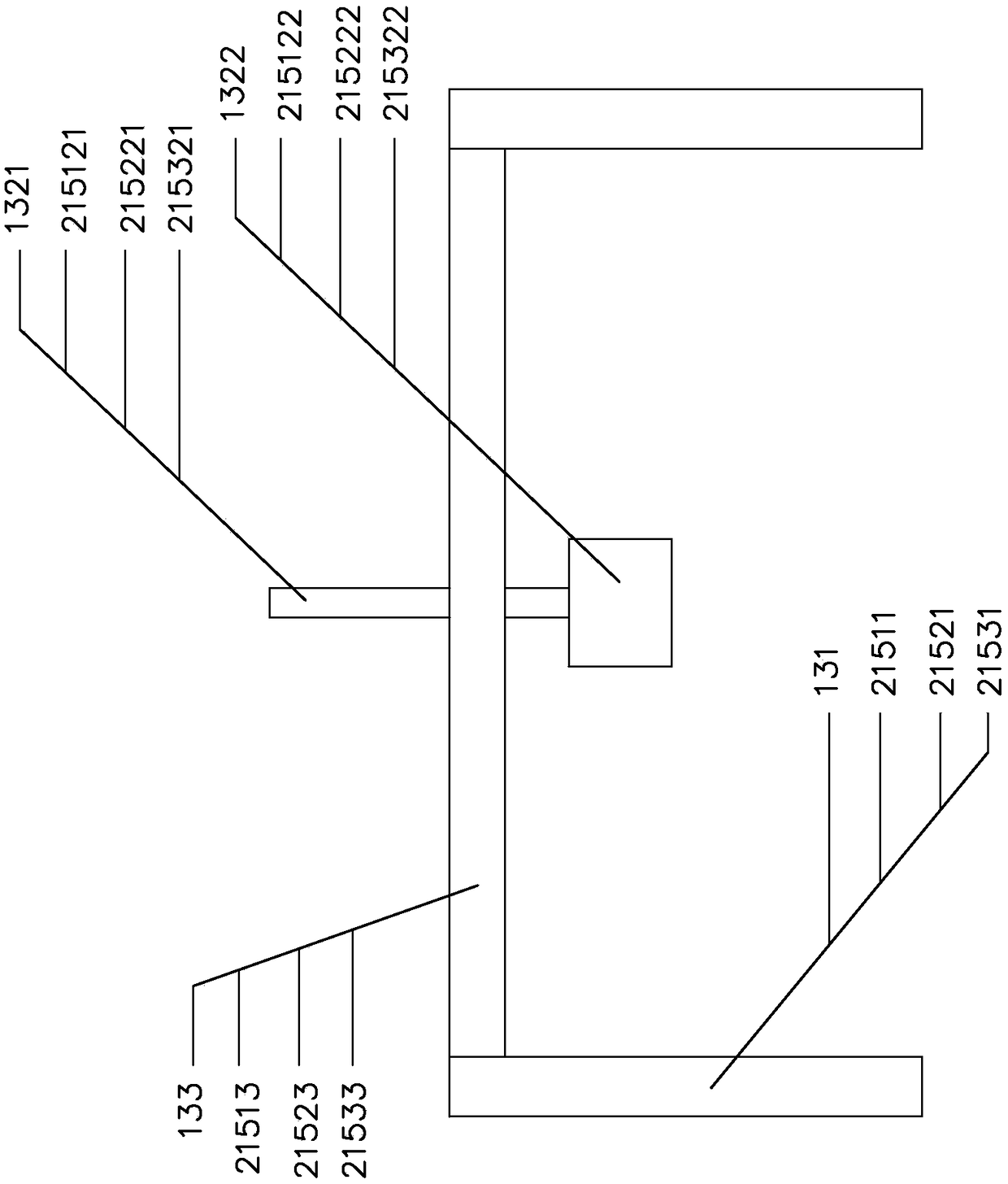Production process of AG (anti-glare) glass
A production process and glass technology, which is applied in the field of AG glass production process, can solve problems such as glass damage and impact on glass quality, and achieve the effect of reducing contact force and increasing flow speed
- Summary
- Abstract
- Description
- Claims
- Application Information
AI Technical Summary
Problems solved by technology
Method used
Image
Examples
Embodiment Construction
[0056] In order to further explain the technical solutions of the present invention, specific examples are given below to illustrate in detail.
[0057] A kind of production technology of AG glass of the present invention, as Figure 1-6 shown, including the following steps:
[0058] (1) Melting the glass raw material by using the melting furnace 1 to form a glass fluid;
[0059] (2) Carry out float method formation to the glass fluid by melting the tin room to form the early glass plate;
[0060] Preferably, the melting tin room includes a high-temperature floating room at the upstream and a low-temperature floating room at the downstream; The high-temperature house cover 212, the high-temperature supply tin tank 213 for supplying molten tin liquid to the high-temperature melting tin floating tank 211, and the high-temperature recovery tin tank 214 for containing the molten tin liquid flowing out from the high-temperature melting tin floating tank 211; The low-temperature ...
PUM
 Login to View More
Login to View More Abstract
Description
Claims
Application Information
 Login to View More
Login to View More - R&D
- Intellectual Property
- Life Sciences
- Materials
- Tech Scout
- Unparalleled Data Quality
- Higher Quality Content
- 60% Fewer Hallucinations
Browse by: Latest US Patents, China's latest patents, Technical Efficacy Thesaurus, Application Domain, Technology Topic, Popular Technical Reports.
© 2025 PatSnap. All rights reserved.Legal|Privacy policy|Modern Slavery Act Transparency Statement|Sitemap|About US| Contact US: help@patsnap.com



